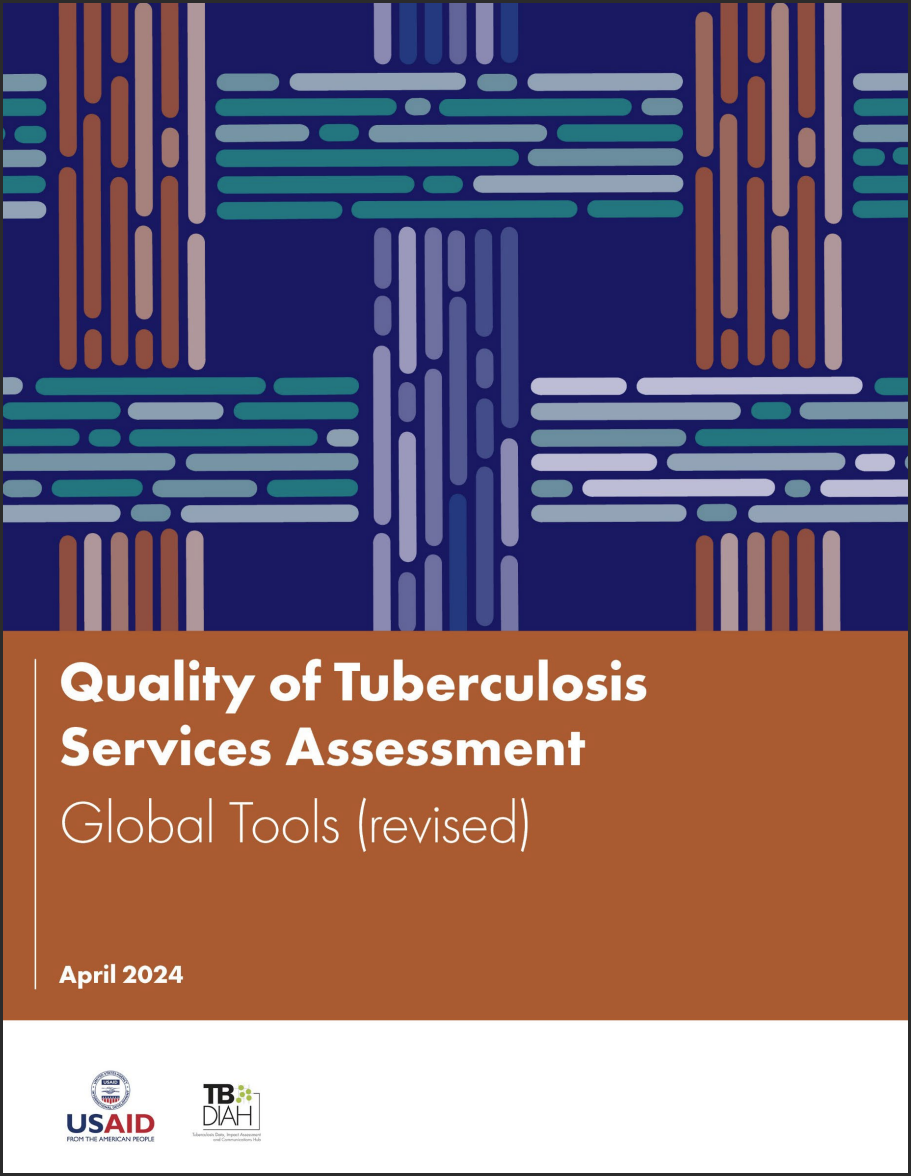Quality of Tuberculosis Services Assessment: Global Tools

Abstract: The Quality of Tuberculosis Services Assessment (QTSA) is conducted with the support of four tools: the Facility Audit, the Provider Interview, the Patient Interview, and the Register Review. MEASURE Evaluation project, funded by the United States Agency for International Development (USAID), developed these four tools with the assistance of colleagues at USAID.
These tools exist in a generic format that demonstrates the content and topics covered in the QTSA. They are not meant to be used without proper adaptation by a country. For instance, some countries may have different names for their health administrative units (e.g., district, province, ward, or woreda) or the name of their tuberculosis (TB) registers (e.g., TB patient logbook, TB confirmed cases register). The tools must be customized to fit the country priorities and context in which they will be used. Note that these tools were designed to be administered electronically and may need to be restructured if used in hard copy format.
This second edition of the QTSA tools reflects the most up-to-date World Health Organization (WHO) normative guidance for TB prevention, diagnosis, and treatment services, including updated guidance on the use of molecular WHO-recommended rapid diagnostics (WRDs), treatment regimens for drug-sensitive TB (DS-TB) and drug-resistant TB (DR-TB), diagnosis and treatment of pediatric TB, and other changes in TB terminology and definitions. It also reflects the various improvements that were made to the tools over the course of country-level adaptation and implementation. This document presents the detailed structure and content of the four standardized global QTSA tools and also contains other relevant procedural tools, such as consent forms.
Access a related implementation guide, supplemental COVID-19 modules, and additional QTSA resources at https://www.tbdiah.org/assessments/quality-of-tuberculosis-services-assessments/.
These tools exist in a generic format that demonstrates the content and topics covered in the QTSA. They are not meant to be used without proper adaptation by a country. For instance, some countries may have different names for their health administrative units (e.g., district, province, ward, or woreda) or the name of their tuberculosis (TB) registers (e.g., TB patient logbook, TB confirmed cases register). The tools must be customized to fit the country priorities and context in which they will be used. Note that these tools were designed to be administered electronically and may need to be restructured if used in hard copy format.
This second edition of the QTSA tools reflects the most up-to-date World Health Organization (WHO) normative guidance for TB prevention, diagnosis, and treatment services, including updated guidance on the use of molecular WHO-recommended rapid diagnostics (WRDs), treatment regimens for drug-sensitive TB (DS-TB) and drug-resistant TB (DR-TB), diagnosis and treatment of pediatric TB, and other changes in TB terminology and definitions. It also reflects the various improvements that were made to the tools over the course of country-level adaptation and implementation. This document presents the detailed structure and content of the four standardized global QTSA tools and also contains other relevant procedural tools, such as consent forms.
Access a related implementation guide, supplemental COVID-19 modules, and additional QTSA resources at https://www.tbdiah.org/assessments/quality-of-tuberculosis-services-assessments/.
Shortname: tl-24-112 TB
Author(s): TB DIAH
Year: 2020 (Revised 2024)
Language: English
Resource Type: Guidance and Tools
Source: TB DIAH
